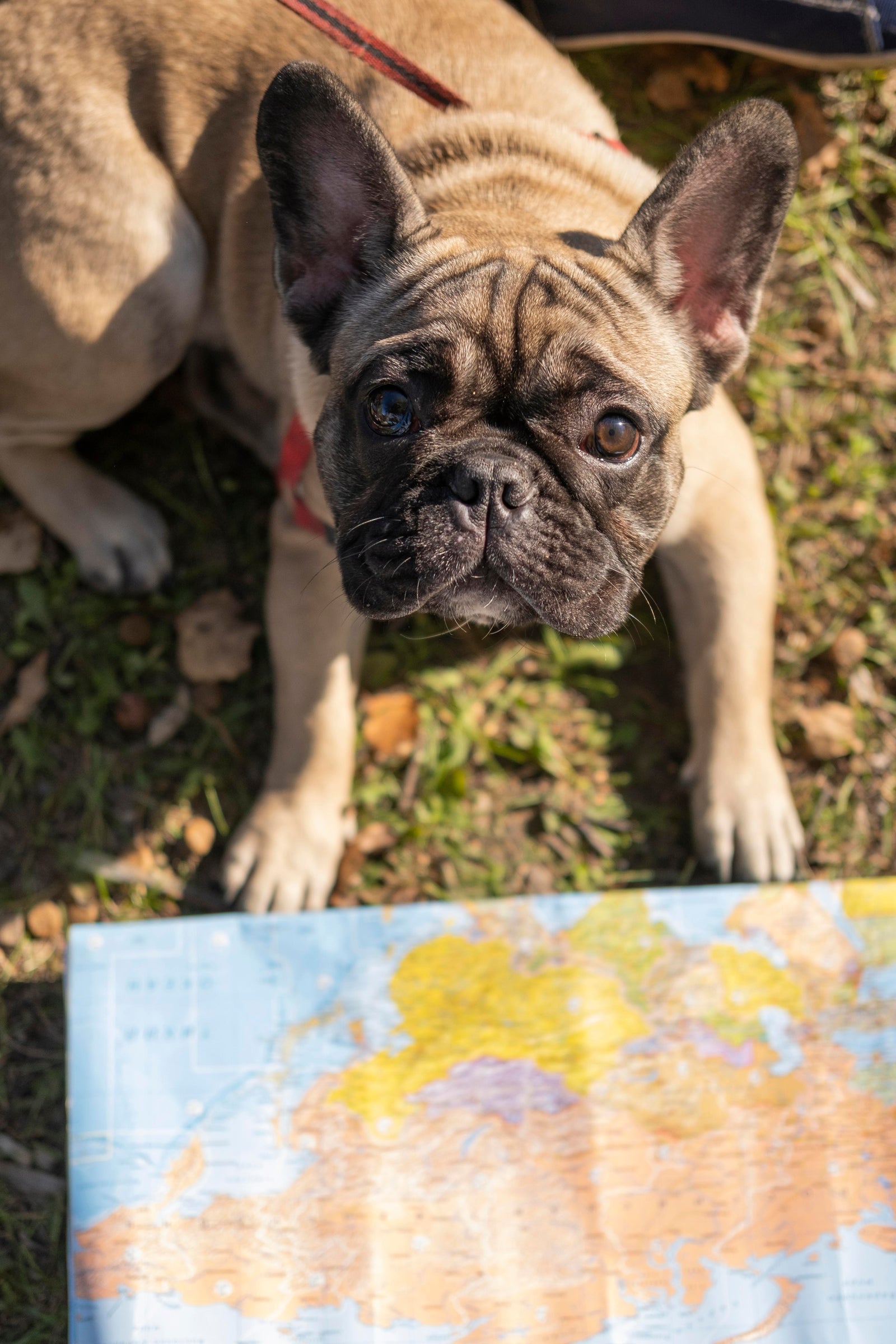Your Cart is Empty
🔥 CLOSE OUT SALE 🔥50% OFF sitewide use code clear final sale, no returns or refunds
🔥 CLOSE OUT SALE 🔥50% OFF sitewide use code clear final sale, no returns or refunds
🔥 CLOSE OUT SALE 🔥50% OFF sitewide use code clear final sale, no returns or refunds

For millions of pet owners, leaving a furry family member behind during travel is unthinkable. Whether for emotional support, medical necessity, or sheer companionship, the demand for pet-inclusive air travel has surged. By 2025, over 30 global airlines now permit cats and dogs in the cabin—a dramatic shift from just a decade ago, when pets were routinely relegated to cargo holds. This guide explores the evolving landscape of pet-friendly air travel, diving into airline policies, legal distinctions, health considerations, and tips for ensuring a smooth journey for all passengers, both human and animal.
Historically, pets traveled as cargo in pressurized compartments, retrieved alongside suitcases at baggage claim. While fatalities were rare (less than 0.01% of pets flown annually, according to the DOT), horror stories of extreme temperatures, rough handling, and stress plagued pet owners. A 2022 survey by the American Pet Products Association (APPA) revealed that 67% of pet owners avoided air travel due to anxiety about their animal’s safety.
The tide began turning in the early 2020s. Airlines recognized the growing demand from two key groups:
Medical necessity: Individuals relying on service dogs for conditions like diabetes, epilepsy, or PTSD.
Companion-driven travelers:Owners unwilling to part with pets for extended trips, especially amid the rise of “pet parenting” culture.
By 2023, over 20 airlines worldwide had revised policies to allow in-cabin pets, prioritizing safety and convenience. However, this shift also sparked debates over allergies, space constraints, and the legitimacy of emotional support animals (ESAs).
While most airlines now permit pets in cabins, rules vary widely. Below is a breakdown of major carriers’ policies as of 2025:
Delta Air Lines
Allowed: Dogs, cats, household birds (U.S. domestic flights only).
Carrier size: 18” x 11” x 11” under-seat carrier.
Fees: 125–200 each way; service animals fly free.
Restrictions: No pit bulls or snub-nosed breeds (e.g., pugs) due to respiratory risks.
United Airlines
Allowed: Dogs, cats, rabbits, and miniature horses (service animals only).
Carrier size: 18” x 11” x 11”; no weight limits.
Fees: $125 each way for pets; service animals exempt.
Perk: Offers “PetSafe” cargo service for larger animals.
Air Canada
Allowed: Dogs and cats.
Carrier size: 21.5” x 15.5” x 8.5”; combined pet/carrier weight ≤ 22 lbs.
Fees: 50–118 CAD each way.
Note: Bans pets on flights exceeding 12 hours.
Lufthansa
Allowed: Dogs, cats (max 8 kg including carrier).
Fees: €70–€110 each way.
Restrictions: Requires EU pet passport and rabies vaccination.
TAP Air Portugal
Allowed: Dogs, cats, birds (max 8 kg).
Fees: €60–€150 each way.
Perk: Offers “Pet Travel” loyalty points.
French Bee
Allowed: Small dogs and cats (≤ 17 lbs).
Fees: $99 each way.
Route limitation: Only permitted on transatlantic flights.
JetBlue: $125 each way; “JetPaws” program provides bonus TrueBlue points.
Southwest: $95 each way; allows pets in carriers on lap.
Frontier: $99 each way; bans pets on international flights.
The distinction between service animalsand ESAs has fueled regulatory upheaval. Under the U.S. Department of Transportation (DOT), service animals are defined as dogs trained to perform tasks directly related to a disability (e.g., guiding the blind, alerting to seizures). In contrast, ESAs provide comfort through companionship but require no specialized training.
From 2015–2020, ESA approvals skyrocketed, with passengers exploiting lax regulations to bypass fees. Incidents of untrained animals causing mid-air disruptions—including a notorious 2018 case where an “emotional support peacock” was denied boarding—prompted airlines to tighten rules.
In 2021, the DOT revised policies:
ESAs no longer qualify as service animals.
Airlines may charge pet fees for ESAs and restrict them to carriers.
Service dogs require DOT forms attesting to their training and health.
EU: Only dogs qualify as service animals; ESAs are treated as pets.
Australia: Bans all emotional support animals on flights.
Middle East: Emirates and Etihad permit service dogs but require 48-hour advance notice.
Airlines like Delta and United restrict snub-nosed breeds (bulldogs, Persian cats) due to heightened susceptibility to oxygen deprivation and heatstroke. The International Pet and Animal Transportation Association (IPATA) advises against sedating such pets, as it can worsen respiratory distress.
Most airlines mandate:
Health certificates:Issued by a vet within 10 days of travel.
Rabies vaccination:Up-to-date, with records for international flights.
Microchipping: Required for EU entry.
Countries like Australia and Japan enforce strict quarantine periods (up to 10 days) for pets lacking proper paperwork.
A 2024 survey by Allergy UK found that 12% of passengers reported allergic reactions to cabin pets. Airlines mitigate this by:
Limiting pets to 4–6 per flight.
Mandating advance notification.
Assigning pet-free rows upon request.
Passengers with severe allergies are advised to:
Carry antihistamines or epinephrine pens.
Choose pet-free airlines like Singapore Airlines (which bans all cabin pets).
Book Early: Airlines cap cabin pets; reserve your spot when buying tickets.
Test the Carrier:Acclimate pets weeks prior with short car rides.
Prep Essentials:
Collapsible bowls and a leash for security checks.
Absorbent pads for accidents.
A familiar toy to reduce anxiety.
Avoid Sedatives:The American Veterinary Medical Association (AVMA) warns against tranquilizers, which can impair breathing.
Direct Flights:Minimize layovers to reduce stress.
Innovations on the horizon include:
Pet Cabins: Lufthansa’s 2026 pilot program offers climate-controlled “pet pods” in cargo.
Allergy-Free Zones:Airbus concepts include HEPA-filtered sections for pet-free travelers.
Digital ID Tags:QR codes linked to pet health records, streamlining check-in.
Comments will be approved before showing up.

French Bulldogs, with their bat-like ears and affectionate personalities, have soared in popularity. However, their demand has fueled a surge in unethical breeding practices and scams, leaving many hopeful owners heartbroken or financially drained. This guide equips you with actionable steps to find ethical breeders, recognize red flags, and explore adoption alternatives—ensuring your Frenchie journey is safe, responsible, and rewarding.

Crate training is often associated with puppies, but it can be equally beneficial for older French Bulldogs. Whether your Frenchie is new to your home or simply hasn’t been crate trained before, introducing them to a crate can provide them with a safe and comforting space. Here’s how to do it effectively while keeping their unique personality and needs in mind.

French Bulldogs, with their charming personalities and easygoing demeanor, have become one of the most popular dog breeds for pet owners. But what about bringing them into the workplace? Taking your Frenchie to work can be a rewarding experience for both you and your pup, but it’s important to weigh the pros and cons and prepare properly.
Helpful information on the French Bulldog dog breed.
We will also notify you with new releases and special offers.
Informational posts about French Bulldogs. Tips and helpful advice on the Frenchie breed and other breeds.
Sign up to get information & expert advice about pets' health and safety. We will also notify you with new releases and special offers.